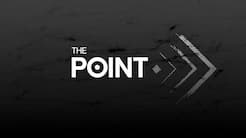The University of Melbourne seemed to be heading down the right path in its commitment to increasing Indigenous employment to parity levels by this year, 2020. On further examination of the statistics on Indigenous employment 2015-20, however, there are some major flaws in the implementation and selection processes that need to be raised. The recent appointments of non-Indigenous staff over and above Indigenous people is of major concern highlighting systemic failures in the delivery of equality of justice in employment outcomes for Aboriginal and Torres Strait Islander people.
The recent selection of non- Indigenous people to key positions in teaching Indigenous Studies, and the Directorship of the inaugural Indigenous Knowledge Institute contradict the University’s statutory and formal obligations to equality of Indigenous employment. Both decisions have attracted extreme disappointment from many people from within the University and Indigenous communities with expressions of outrage and calls for those decisions to be rescinded and re- presented as Identified Aboriginal and Torres Strait Islander positions.
These are crucial matters for our people seeking career paths within the academy. Opportunities for employment in the teaching of what is considered to be the oldest living surviving culture in the world as an inherent birthright, is of fundamental importance to this commitment. Australian Indigenous studies and cultural learning is the foundation of our history and identify as a people, embodied in a timeline of 60,000- 120,000 years prior occupation and sovereign ownership. A vibrant surviving and living culture with such a unique epistemology and pedagogy of teaching justifies its own place front and centre of any academic institution in Australia.
In the pursuit of greater parity for Aboriginal and Torres Strait Islander people within the academy, there are a number of Victorian Universities that have had their establishment Acts amended by the Victorian Parliament, to include formal obligations towards Indigenous Education and Employment. The 2009 University of Melbourne Act (Section 6. f) formalises that the University must: “use its expertise and resources to involve Aboriginal and Torres Strait Islander people of Australia in its teaching, learning, research and advancement of knowledge activities and thereby contribute to (i) realising Aboriginal and Torres Strait Islander aspirations; and (ii) the safeguarding of the ancient and rich Aboriginal and Torres Strait Islander cultural heritage”.
Further to these formal obligations, one of the key supporting initiatives of its Reconciliation Action Plans, the University of Melbourne introduced its Indigenous Employment Framework (IEF) in 2010. After conducting its third IEF (2016-2018), the mutual goal between the two initiatives was to increase the number of Aboriginal and Torres Strait Islander staff to levels in line with the total population of Aboriginal and Torres Strait Islander peoples of 2.6% by this year 2020.
This initiative arose out of concern for the low level of Indigenous employment in 2015
which indicated that Indigenous people were still largely underrepresented, forming 0.9%
of Melbourne University’s total number of staff. To reach its parity target of 2.6 % by this
year 2020, Uni Melb needed to employ an extra 100 Indigenous staff from 2015 to 2020,
or 20 per year. On current estimates, it seems to be going backwards. The statistics
indicate that the current Indigenous staffing level at Melbourne University is only 1.6%,
far below the target goal. Furthermore, it is reported that of the 139 Aboriginal and
Torres Strait Islander peoples working at the University only 27 or less than one fifth of
the total number were employed in full time or equivalent academic positions- not to
mention those positions that continue to go to non-Indigenous career advancement.
Reaching parity targets in Indigenous empowerment is strongly endorsed by the National Agreement of the Closing the Gap strategy and its commitment to improving the lives of Aboriginal and Torres Strait Islanders, 2020.
Indigenous leaders declared that ‘nothing less than reaching parity with other Australians
in the new Closing the Gap targets will be satisfactory’. Structural reforms are the key priority for driving the changes required which includes national socio-economic targets in areas of education, employment, health and wellbeing, justice, safety, housing, land and waters, and Aboriginal and Torres Strait Islander culture and languages.
I fully empathise with those Indigenous people feeling a sense of betrayal in the way they
are being overlooked for positions in what is culturally their own pathway of permanent employment. In the ongoing commitment to greater self-determination for my people, I'm saddened to see what's been allowed to happen under the University's statutory and formal obligations to closing the gap on Indigenous employment. It is heartbreaking to see the hard work that culminated in the integrity of those employment commitments being undermined by what are seen as culturally inappropriate selection processes.
- Dr Wayne Atkinson is a Senior Fellow of the School of Social and Political Science at the University of Melbourne.


